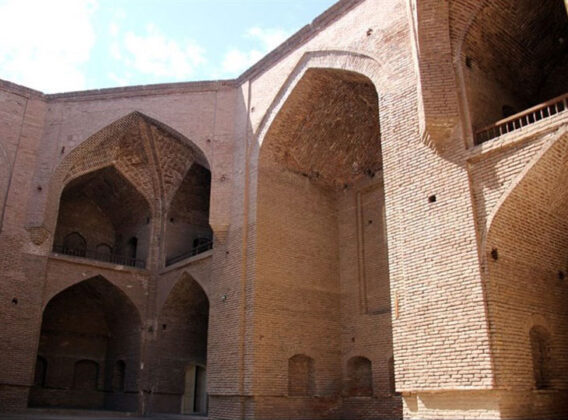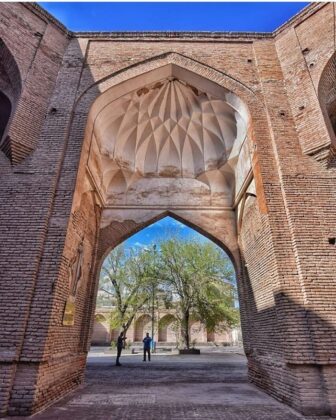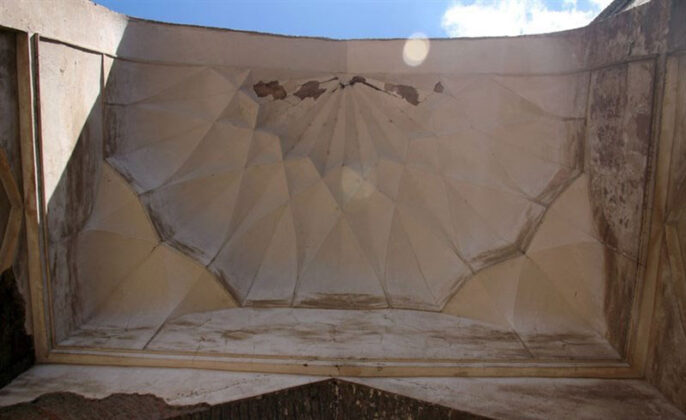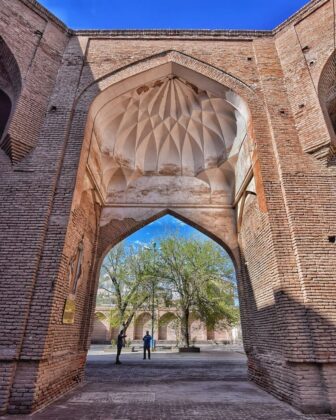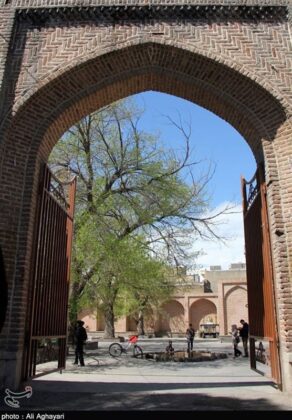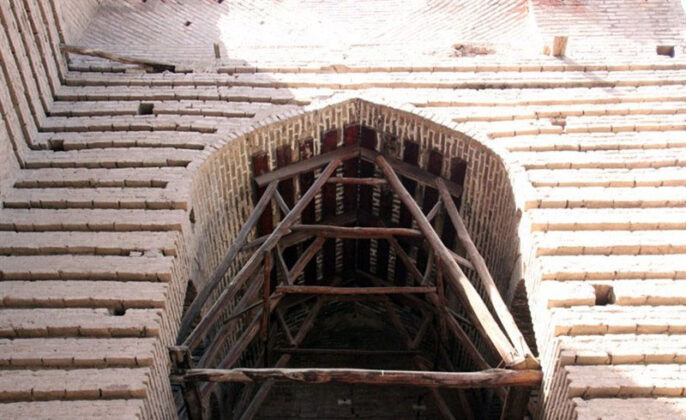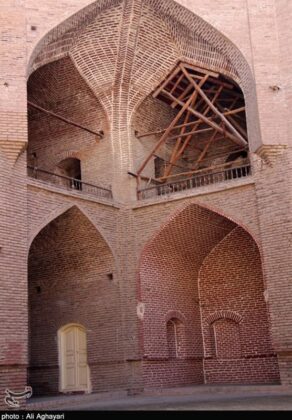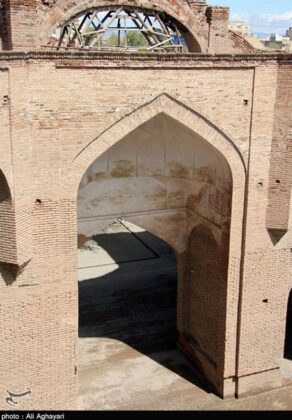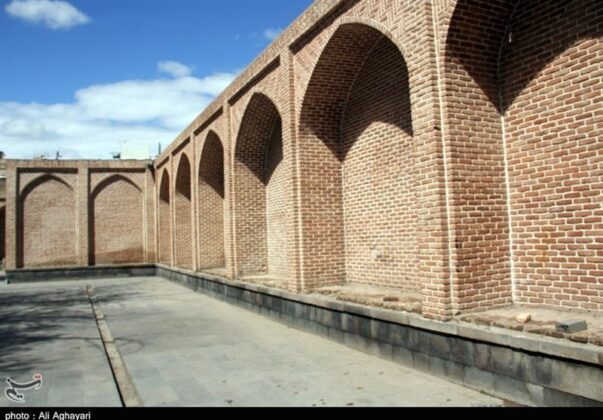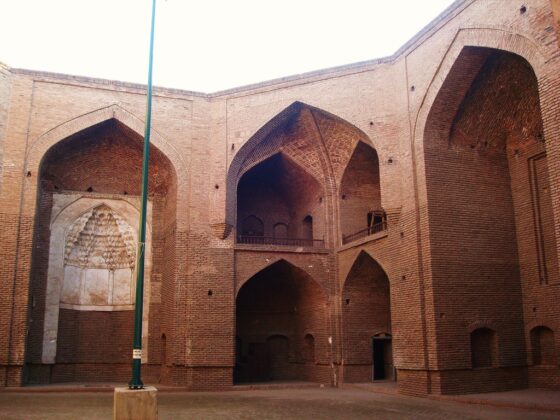Matlab Khan mosque has distinguishing architectural features that have made it unique among the other historic mosques in Iran.
With a mihrab (a semicircular niche in the wall of mosque indicating the qibla) 12.5 metres in height and a 15-metres-high iwan (a large arched entrance), the mosque has one of the highest mihrabs and iwans among the whole mosques in Iran.
Located in the central part of Khoy, Matlab Khan mosque has a large, open-air square shabestan (a space usually used during summers) surrounded by two-story chambers, high “shahneshin”s (twin-columned iwans) and a very large iwan.
The upper parts of the mihrab at the entrance of shabestan are decorated with big stucco Muqarnas (a form of ornamented vaulting in Islamic architecture). In the upper story, special areas have been built with wooden banisters at the four corners of shabestan for women to sit. Worshippers can reach those areas by walking up the stairs built in the four corners of the courtyard.
The mosque was constructed during the Ilkhanid dynasty in the central and old part of Khoy. The mosque was reportedly destroyed once, and reconstructed around 190 year ago under the auspices of Matlab Khan, a grandchild of Sheikh Bahai, who was a special goldsmith working for Abbas Mirza -a Qajar crown prince of Persia and governor of Azerbaijan.
After reconstruction, the mosque was named after Matlab Khan.
What follows are photos of the mosque retrieved from various sources:

